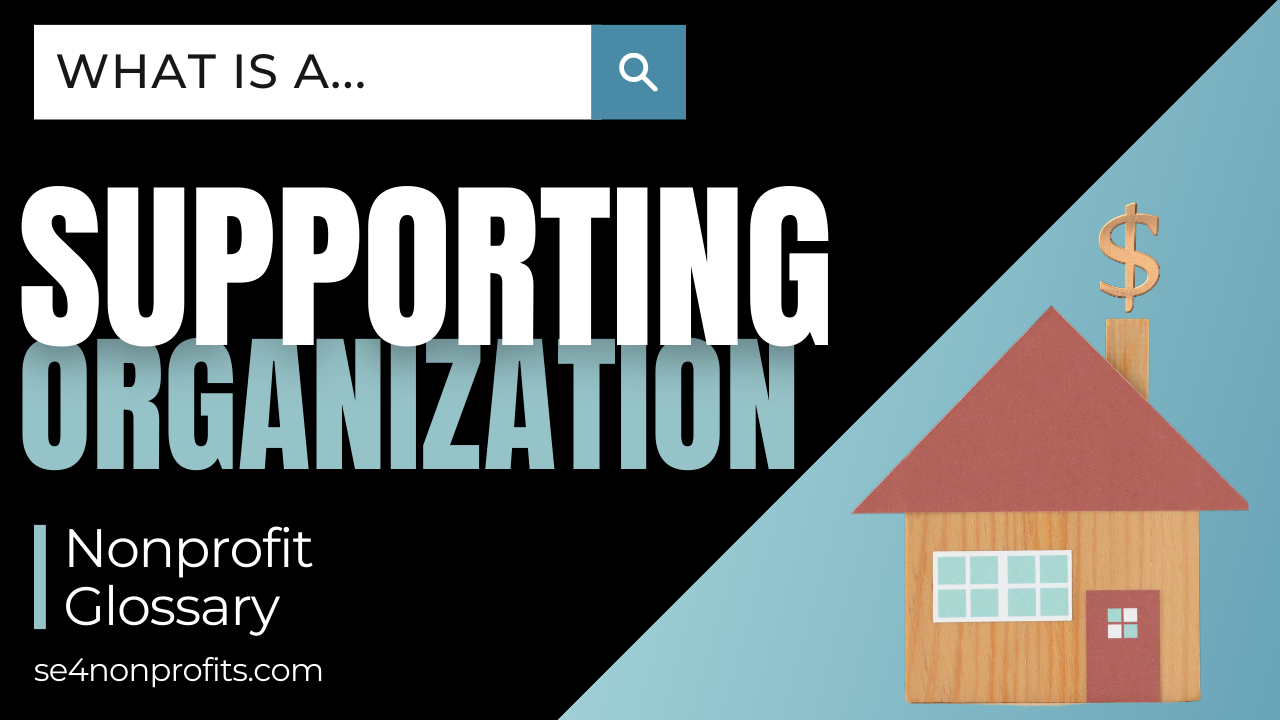
Blog.
Most Recent Posts

VIDEO: What is an Unusual Grant? | Nonprofit Glossary
SE4N's Benjamin Takis provides a short summary of the term “unusual grant” and how this concept affects a 501(c)(3) nonprofit organization’s ability to pass the public support tests on Form 990 Schedule A, and avoid being tipped into private foundation status.

VIDEO: What is a Supporting Organization? | Nonprofit Glossary
SE4N's Benjamin Takis provides a short summary of what 501(c)(3) “supporting organization” status means, how it relates to a nonprofit organization's public charity status under Form 990, Schedule A, and some of the key requirements applicable to supporting organizations.

Q&A #146 – Is IRS approval required to become a supporting organization?
According to the IRS instructions for Schedule A of the Form 990, an organization that previously used the public support tests under sections 170(b)(1)(A)(vi) or 509(a)(2) of the Internal Revenue Code is not required to receive an IRS determination that it qualifies as a “supporting organization” under section 509(a)(3) before treating itself as supporting organization in Schedule A. However, some organizations may wish to request such an IRS determination using Form 8940.

VIDEO: Understanding the Public Support Test under § 509(a)(2) | 5-Minute Lessons 4 Nonprofits
SE4N's Benjamin Takis provides a short lesson for 501(c)(3) nonprofit organizations on how to understand the calculation of "public support" under Internal Revenue Code section 509(a)(2).

VIDEO: Understanding the Public Support Test under § 170(b)(1)(A)(vi) | 5-Minute Lessons 4 Nonprofits
SE4N's Benjamin Takis provides a short lesson for 501(c)(3) nonprofit organizations on how to understand the calculation of "public support" under Internal Revenue Code sections 170(b)(1)(A)(vi) and 509(a)(1).

Q&A #89 – Are grants from donor advised funds subject to 2% limit when calculating public support on Form 990, Schedule A?
As of the date of this post, contributions received from a donor advised fund (DAF) are generally counted in full and not subject to the 2% limitation when calculating public support under section 170(b)(1)(A)(vi) of the Internal Revenue Code on Form 990, Schedule A. This favorable treatment currently applies regardless of whether the individual who holds the DAF account makes substantial contributions to the organization. However, this treatment has been under increasing scrutiny, so be aware that these rules could change significantly in the future.

Q&A #72 – What is required to meet the 10% facts and circumstances public support test?
It is common for 501(c)(3) public charities to rely on the 10% facts and circumstances test as an alternative to maintaining 33 1/3% public support that is generally required under Internal Revenue Code sections 509(a)(1) and 170(b)(1)(A)(vi). However, there are certain requirements that must be satisfied, and the Form 990, Schedule A requires organizations to explain how they meet these requirements.

Q&A #69 – Can a grant from a previous grantor be treated as an unusual grant?
Large grants are usually a reason to celebrate, but some grants are so large that they pose significant problems for an organization’s public support tests. The ability to exclude “unusual grants” from the public support test can be extremely helpful in these situations. The fact that a grantor or funder has made contributions in the past is a significant factor weighing against unusual grant treatment, but this by itself is not necessarily disqualifying.

Q&A #63 – Are grants from foreign charities subject to the 2% limit when calculating public support on the Form 990, Schedule A?
This is a common question that has lacked a clear answer for a very long time. Most practitioners have concluded that grants from foreign charities meeting certain requirements should qualify to be counted in full for public support test purposes, and not subject to the 2% limitation, However, there is some risk that the IRS could disagree with this position.

Q&A #51 – How can a 501(c)(3) organization change its public support test?
It is not uncommon for organizations to switch to a different public support test due to evolution in their programs and funding sources. Switching between the 170(b)(1)(A)(vi) test (sometimes also called the 509(a)(1) test) and the 509(a)(2) test can be done simply by checking the appropriate box and filling out the applicable parts in your next Form 990, Schedule A. However, this change will not be reflected in the IRS records or tax-exempt organization database, which may cause some confusion with your grantors or donors if additional steps are not taken.

Q&A #24 – When must a newly-classified private foundation start complying with the 5% minimum distribution rule?
This seemingly simple question is actually quite complicated. Private foundation status comes with numerous new rules, restrictions, and reporting requirements (the 5% minimum distribution rule is only one of many new requirements that you need to be aware of), so you are on the right track if you are starting the planning process for this transition as early as possible.

Q&A #16 – Should I take over a dormant 501(c)(3) rather than form a new organization?
I have seen numerous people try this approach over the years, but it is almost always a bad idea. The main problem is that you are going to have a very difficult time keeping the previously inactive organization’s status as a 501(c)(3) “public charity” (as opposed to a “private foundation,” which is a type of 501(c)(3) organization that is subject to less favorable rules).